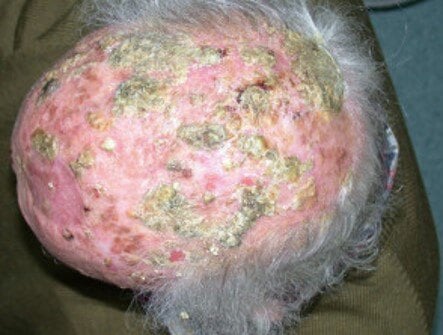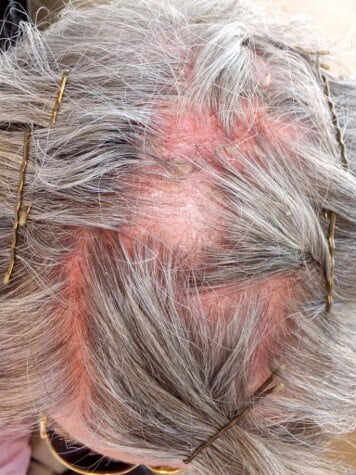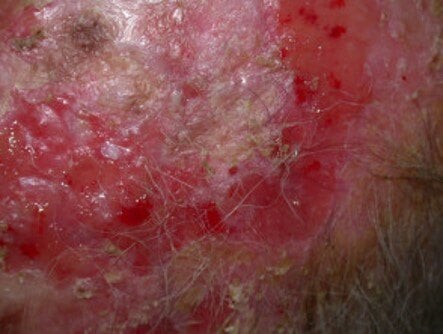Erosive Pustular Dermatosis

What is Erosive Pustular Dermatosis?
Erosive pustular dermatosis (EPD) of the scalp can lead to scarring alopecia. This condition causes chronic inflammation, which can damage hair follicles and result in permanent hair loss and scarring in the affected areas. The characteristic lesions of EPD, such as erosions, pustules, and crusted plaques, can heal with scarring, leading to a loss of hair in those regions. Early diagnosis and treatment are essential to manage symptoms and minimize the risk of extensive scarring and permanent hair loss.
Symptoms & Causes

Erosive pustular dermatosis (EPD) is a rare skin condition that primarily affects elderly individuals, especially on the scalp, but can also involve other areas such as the legs. The exact cause of EPD is not well understood, but it is believed to be related to skin trauma or damage and an abnormal inflammatory response. Several factors can contribute to the development of EPD like skin trauma, chronic sun exposure, aging, infections, topical medications or other other skin conditions like pre-existing skin conditions, such as actinic keratoses or basal cell carcinoma.
Symptoms:
Erosions and Ulcers: Painful, shallow sores that may vary in size and can coalesce.
Pustules: Small, pus-filled blisters that often rupture, leading to crust formation.
Crusting: Thick, yellow-brown crusts that form over the erosions and pustules.
Scarring: Healing lesions may lead to scarring and, when on the scalp, can cause permanent hair loss (scarring alopecia).
Pain or Discomfort: Affected areas may be painful, with burning or itching sensations.
Inflammation: Redness and swelling around the lesions.
Diagnosis:
Clinical Examination: Dermatologists can often recognize EPD based on the appearance of the lesions and the patient's medical history.
Skin Biopsy: A biopsy may be performed to rule out other conditions and confirm the diagnosis by showing nonspecific chronic inflammation without evidence of a specific infectious agent.
Treatment:
Topical Corticosteroids: To reduce inflammation and promote healing.
Topical Calcineurin Inhibitors: Such as tacrolimus or pimecrolimus, which act as steroid-sparing agents.
Antibiotics: Both topical and oral antibiotics may be used if secondary bacterial infection is suspected or confirmed.
Zinc Sulfate: Topical zinc sulfate can help manage the condition.
Wound Care: Proper wound care, including the use of dressings, to keep the area clean and promote healing.
Avoidance of Trauma: Protecting the affected area from further trauma or damage.
EPD can be persistent and challenging to manage, requiring regular follow-up with a dermatologist to monitor and adjust treatment as necessary.
Diagnosis & Treatments

A scalp biopsy is helpful to confirm the diagnosis. It generally reveals a mixture of lymphocytes, plasma cells, and neutrophils. It can often appear to be an infection, with the classic ‘pus’ appearing present. However cultures of the area are usually negative. Occasionally gram-negative bacteria may be present, flourishing in moist lesions, but occurring as a secondary contaminant and not a primary pathogen.
High potency topical steroids clobetasol and betamethasone are generally effective in controlling the disorder and drying out the lesions. However the resultant alopecia may or may not be reversed.
